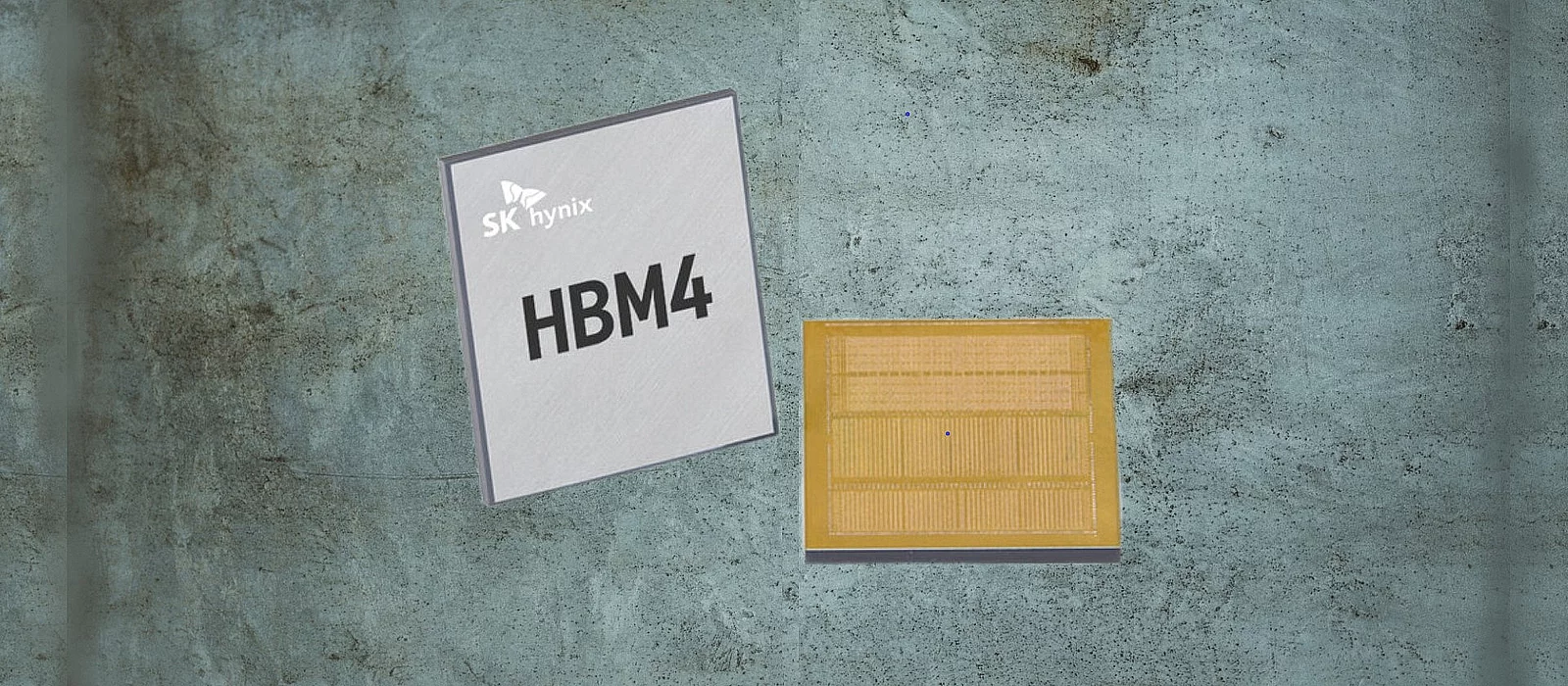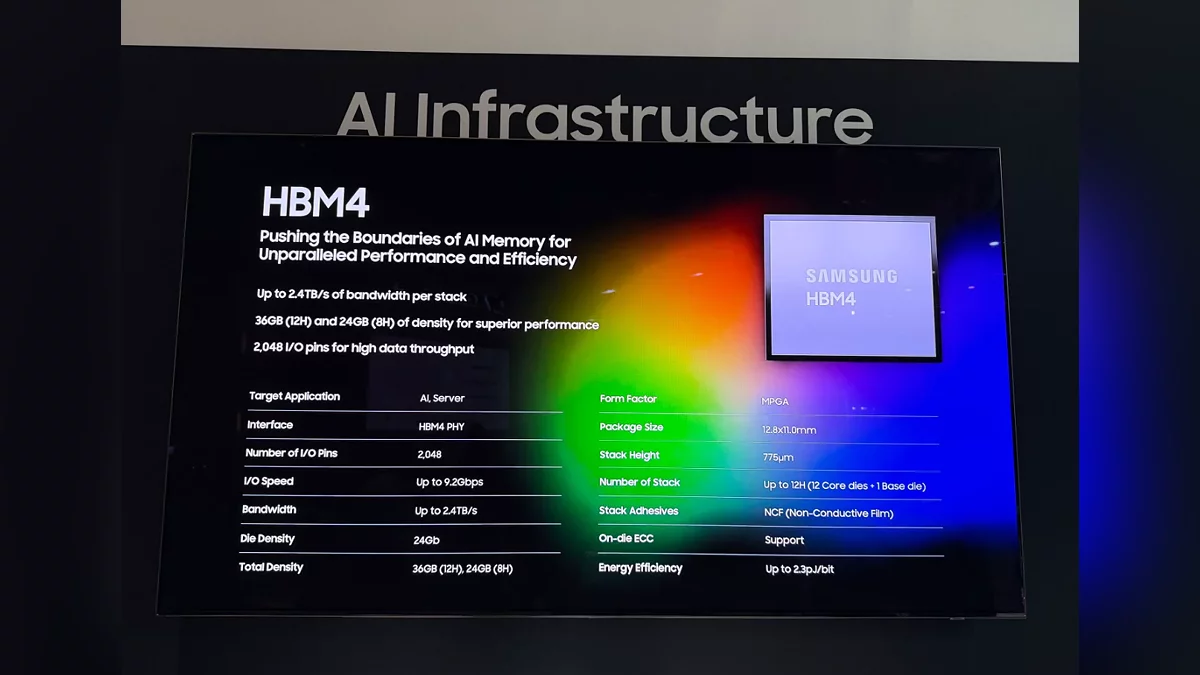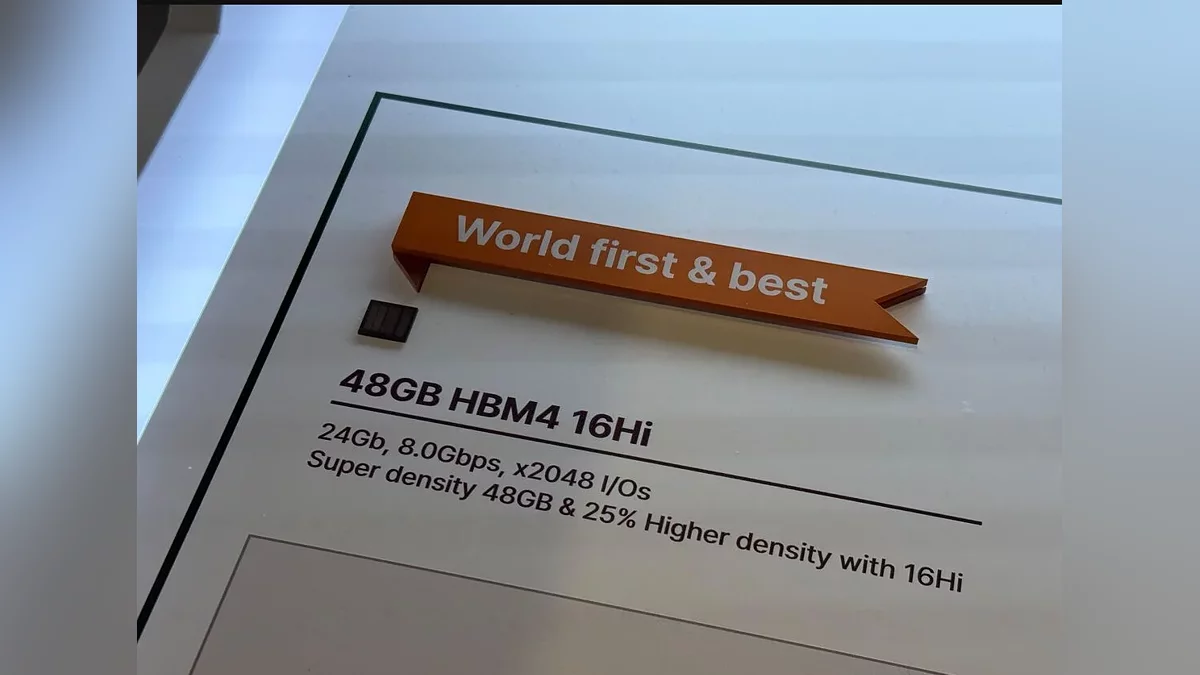Samsung and SK Hynix unveil memory even top GPUs can't handle

Amid the rapid development of artificial intelligence technologies, leading semiconductor manufacturers — Samsung, SK Hynix, and Micron — have introduced the next generation of HBM4 memory and unveiled its evolutionary successor, HBM4E. SK Hynix, a key NVIDIA partner, was the first to deliver HBM4 samples, showcasing 16-layer modules with a total capacity of 48 GB (3 GB per layer) and a speed of 8 Gbps. However, by 2025, the company plans to expand its lineup with 12-layer versions featuring 36 GB of memory. In the long term, engineers are considering 20-layer structures, though such advancements may become a hallmark of the next generation.
Eager to take the lead, Samsung announced it had achieved speeds of 9.2 Gbps — a likely foundation for future HBM4E development. The Korean tech giant aims to introduce 64 GB stacks by 2027, with each of the 16 layers holding 4 GB of data. Bandwidth is also set to increase to 10 Gbps, marking a 25% improvement over current HBM4 speeds.
Both companies emphasize that producing HBM4 and HBM4E will require transitioning to advanced lithography processes traditionally used for logic chips. This is particularly crucial for developing base dies, which serve as the foundation for multi-layer structures. Micron, taking a more cautious approach, has announced plans to begin mass production of HBM4 only in 2026, highlighting the technical challenges involved in adapting the technology.
Experts unanimously agree that due to its high production costs, HBM4 will not appear in gaming graphics cards. Instead, its target market is AI accelerators and supercomputers, where memory speed and capacity are critical for neural network training. Demand for such solutions already exceeds supply, and with the arrival of HBM4E, the gap may widen further — especially considering Samsung’s plans for 64 GB modules. Analysts predict that by 2027, HBM4 and its successors will account for over 40% of the high-performance memory market. However, the big question remains: can manufacturers strike a balance between innovation and cost, and how soon will this technology reach mainstream users?
-
NVIDIA is working on a professional graphics card featuring 96 GB of GDDR7 memory
-
NVIDIA and Partners Develop SOCAMM — The Future of Memory for AI Computers
-
Major Memory Manufacturers to Halt DDR3 and DDR4 Production in 2025
-
TEAMGROUP to Unveil Self-Destructing SSD and New Memory at Embedded World 2025
-
NVIDIA Unveils RTX PRO 6000 Series Graphics Cards with 96GB of Memory



